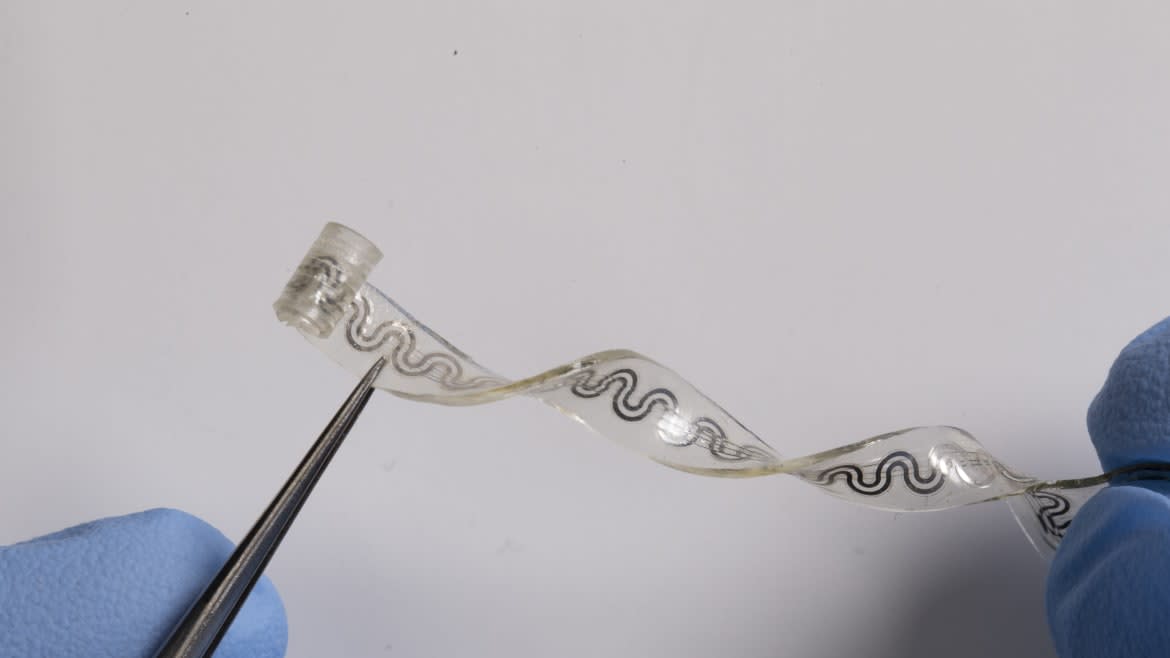Could This Dissolvable Implant End the Opioid Epidemic?

- Oops!Something went wrong.Please try again later.
As the U.S. reckons with a deadly opioid crisis that has claimed nearly a million lives since 1999, researchers are hard at work looking for an alternative way to help treat pain. Doing so could provide relief to some 50 million U.S. adults who suffer from chronic pain every single day—and without the risk of them falling victim to addiction and overdose.
“Although opioids are extremely effective, they also are extremely addictive,” John A. Rogers, a professor of materials science and engineering at Northwestern University, said in a press release. “As engineers, we are motivated by the idea of treating pain without drugs—in ways that can be turned on and off instantly, with user control over the intensity of relief.”
That’s why Rogers and his team have developed a remote-controlled, flexible implant that uses cooling to relieve pain instead of drugs. In a paper published Friday in the journal Science, the Northwestern researchers say their device is so tiny it can wrap around a single nerve. Once attached, an external hand pump allows the patient to remotely activate it, cooling down the nerve and blocking any pain signals that might otherwise come through.
“The technology reported here exploits mechanisms that have some similarities to those that cause your fingers to feel numb when cold,” Rogers said. “Our implant allows that effect to be produced in a programmable way, directly and locally to targeted nerves, even those deep within surrounding soft tissues.”
Of course, too much cooling can end up damaging your nerves like a bad case of frostbite. That’s why the device also includes an array of tiny sensors to monitor the temperature of the nerve to ensure it stays at a safe temperature. It’s also made with biocompatible materials. That means the patient’s body will naturally absorb the implant into their biofluids over the course of days—so no pesky out-patient surgery is required to remove it. This is especially important because the nerves are incredibly delicate. The less you mess with them, the better.
“If you think about soft tissues, fragile nerves and a body that’s in constant motion, any interfacing device must have the ability to flex, bend, twist and stretch easily and naturally,” Rogers explained. “Furthermore, you would like the device to simply disappear after it is no longer needed, to avoid delicate and risky procedures for surgical removal.”
So far the device has only been tested on animal models. But if and when it goes through human trials, it could be a gamechanger for the millions suffering from chronic pain throughout the U.S.. When that happens, we’ll hopefully see major relief to the opioid epidemic as well.
Got a tip? Send it to The Daily Beast here
Get the Daily Beast's biggest scoops and scandals delivered right to your inbox. Sign up now.
Stay informed and gain unlimited access to the Daily Beast's unmatched reporting. Subscribe now.

